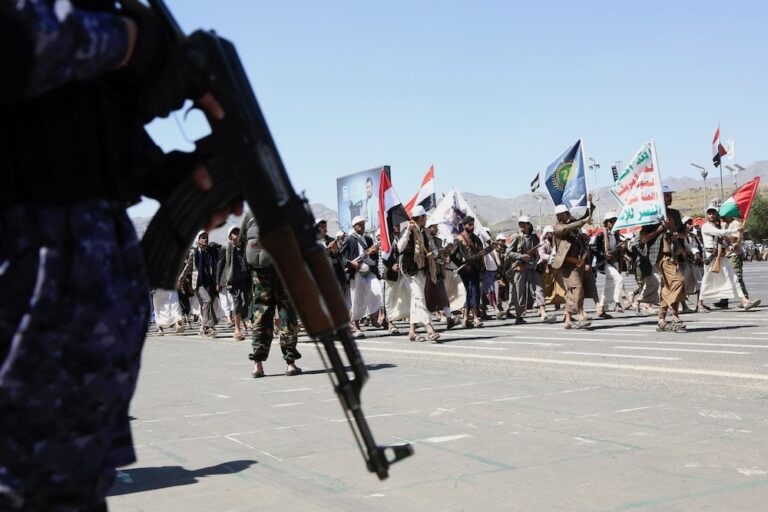The attack on 18 March 2011 in the Yemeni capital killed 45 people and wounded up to 200 others, and became a symbol of resistance to then-president Ali Abdullah Saleh.
(Human Rights Watch/IFEX) – Sanaa, September 27, 2012 – The previous Yemeni government’s investigation into the so-called Friday of Dignity massacre on March 18, 2011, in Yemen’s capital is marred throughout by flaws and political interference, Human Rights Watch said today.
The Yemeni authorities should order a new inquiry into the attack, the deadliest by pro-government gunmen on protesters during the 2011 uprising, Human Rights Watch said. The attack in Sanaa killed 45 people and wounded up to 200 others, and became a symbol of resistance to then-president Ali Abdullah Saleh. The criminal trial of 78 defendants in the case is scheduled to begin on September 29, 2012.
“The previous government’s investigation of the Friday of Dignity killings was deeply flawed and may have been a brazen attempt to shield government officials from prosecution,” said Letta Tayler, senior Yemen researcher at Human Rights Watch. “Yemen’s new government should demonstrate its commitment to justice for serious rights abuses by carrying out a new inquiry.”
Among other flaws in the Friday of Dignity investigation, top officials whom witnesses named as suspects were never sought for questioning, including a governor whose Sanaa rooftop was the main staging area for gunmen as they fired at protesters. Six weeks after the attack, Saleh dismissed the general prosecutor after he demanded the arrests of key suspects, including government officials.
Of 78 suspects indicted in June 2011 for the attack, at least 30 remain at large, including the main defendants – a colonel and his brother who then held top security posts. Lawyers for both defendants and victims allege that the authorities made no serious effort to find the suspects. Only 2 of the 14 defendants in pre-trial detention have been charged with intent to kill. Lawyers for the victims have expressed concern that the detained defendants are innocent bystanders or at most peripheral accomplices, and are also seeking a new investigation into the incident.
The killings took place at the southern edge of Change Square, a then-burgeoning anti-Saleh protest camp. As tens of thousands of protesters ended their midday prayer, masked gunmen began shooting at them from the street, trees, and houses including the Sanaa residence of the governor of Mahweet, a governorate northwest of the capital, according to videos and dozens of witnesses who spoke to Human Rights Watch and the media or testified to the authorities.
In the days before the shootings, local residents and Saleh loyalists created a 2.5-meter-high brick wall between the protesters and the gunmen that they drenched with gasoline and set on fire as the attack began, creating clouds of smoke that obscured the shooters and trapped the protesters. Protesters tore the wall down and brutally beat the alleged gunmen, according to video and witness accounts.
Nearly all those killed or wounded were protesters hit by gunfire. Most of the dead were shot in the head or chest. The indictment charges 52 of the defendants with firing gunshots with intent to kill.


